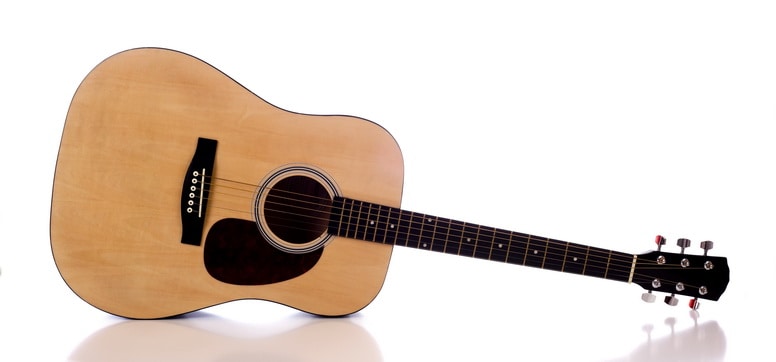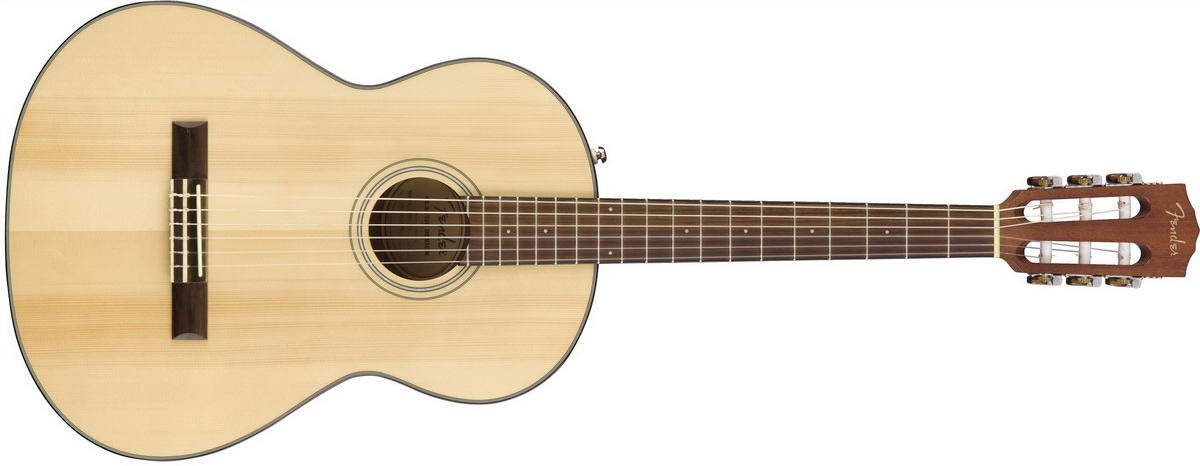Which Acoustic Body Style is Right for You?
Maybe you’re looking for your first guitar, or perhaps you want a versatile addition to your collection. Either way, it’s easy to get distracted by finishes or appointments. However, when you’re choosing a guitar, one of the most important things to consider is the guitar’s body style.
Body style involves a lot more than aesthetics. After all, an acoustic instrument has only string vibration and its construction to rely on when it comes to sound. Here’s what you need to know when it comes to choosing a concert vs dreadnought acoustic guitar.
Basics Of Guitar Body Shapes & Styles
The Dreadnought
Dreadnought acoustic guitars are, to this day, the most popular among the different types of guitar’s body shapes, with a characteristic large and broad body capable of excellent projection and volume. The name comes from Britain’s HMS Dreadnought, a rugged battleship known for its size.

When it was first produced, the dreadnought guitar was a marvel–most acoustic guitars in the 1900s didn’t have much of a bass end. While it was somewhat harder to handle than most guitars of the era, the dreadnought came with (and still comes with) several advantages:
- More volume–All acoustic guitars work by amplifying the vibration of each string a player picks or strums. Dreadnought guitars have been crafted with this in mind–they have enough depth to ensure that they project sound clearly, but not so much depth that the sound of a picked string becomes lost in the body of the guitar.
- More sustain–For most styles of music, sustain is a good thing. Sustain essentially means that the instrument holds a picked or strummed note/chord for a more extended period. As you play a song, the sustained notes or chords create overtones, which create a sophisticated, organic sound. Granted, some musical styles (like blues) depend on a lack of sustain. If you play in one of these styles, a dreadnought may not be ideal for you.
- Distinctive good looks–Any guitarist knows that looks are the least important things when it comes to choosing an instrument. However, many players want a guitar that is at least somewhat in line with their playing style. The dreadnought is a classic when it comes to acoustic instruments, and its body style lends itself to many musical styles.
The Concert
For guitarists looking to go beyond the dreadnought, the concert-body guitar is a great choice. Concert-style guitars are generally smaller than dreadnoughts, and they, therefore, tend to have a bit less low end.

The concert-style guitar is known for having a balanced tone, and some even compare it to a piano. Its lower bout is still wide, which means it delivers clear notes in the bass range. However, its smaller body means you don’t get as many overtones as you would with a dreadnought. The result is a tighter, focused sound. Its smaller body also makes it a bit easier to handle on stage.
The Grand Concert
The Grand Concert guitars are slightly more significant than the Concerts, and their body shapes are often based on the shapes of Classical guitars having very pronounced curves. The size and curves of the Grand Concert guitar combine to produce a perfectly balanced tone in the mid-range, with incredible clarity. Smaller body shapes, versatility, and sound make Grand Concert an excellent choice for your early playing years.
The Advantages Of Each
As you likely know, there are no single acoustic guitar body shapes that are right for everyone. Both the dreadnought and the concert body have their merits. That said, it’s essential to consider both the sonic and the practical advantages of each.
The Dreadnought
The dreadnought guitar didn’t become the most popular body shape by accident. Its versatile sonic profile makes it a great choice for many guitarists. Here are some of the advantages:
- Rich overtones–Especially if you’re a solo performer, you need an instrument that captures the full musical range of a given song. A dreadnought’s body lets it hold the sound of a chord or note, which lends fullness to your sound. It can be challenging to create a vibrant and nuanced sound with one instrument, but the deep body of a dreadnought makes it possible.
- Versatility–It is capable of creating a full sound, but that doesn’t mean it can’t be used in other styles of music. Palm-muting and similar techniques can be used to deaden sustain. Even with sustain dulled, a dreadnought has impressive projection abilities, making it an excellent choice for those who play live and need the voicing of each note to matter.
- Sustain–We all know what it feels like to let the ending of a song settle. Dreadnought guitars, due to their relatively deep bodies, are capable of holding onto the sound of a given chord or note. This rich sustain helps players of all abilities create meaningful soundscapes at home or while performing.
- Full bass end–Dreadnought guitars have a tapered waist and a pronounced lower bout. The body shape means that they can produce a full-sounding bass end. While a full bass sound may not be desirable for all musical styles, it’s especially valuable for those who perform solo.
- Volume–The large body of a dreadnought creates a louder volume than a smaller guitar. The large body makes it ideal when playing in a band or otherwise competing with other instruments.
The Concerts
- Handling–Concert-body guitars are smaller than dreadnoughts. The smaller size makes it much easier to hold, transport, and play with. If you are a smaller person or someone who wants a guitar that’s easier to handle, this body style may be worth considering.
- Focus–Concert acoustic guitars have a smaller, more rounded lower bout, and many don’t have bodies as deep as most dreadnoughts. The difference in size leads to fewer overtones and a sound that is tighter and more focused overall. Of course, some players want a more varied sound. But if you want each note to sing out, a concert may be the right choice.
- Balance–Concert-style acoustic guitars tend to have smaller body sizes when compared to dreadnoughts. The difference in size means that they will usually have less separation between notes played. This tonal balance makes them especially well-suited to fingerpicking and flat-picking.
Which Should You Choose?
Selecting an instrument is one of any guitarist’s most critical choices. That said, it’s possible to play in virtually any musical style on either a dreadnought or a concert-style acoustic guitar. There’s no right answer when it comes to choosing between concert and dreadnought guitar acoustic guitar. Take your time, listen to sound demos on any guitar you’re considering purchasing, and enjoy your playing journey.
